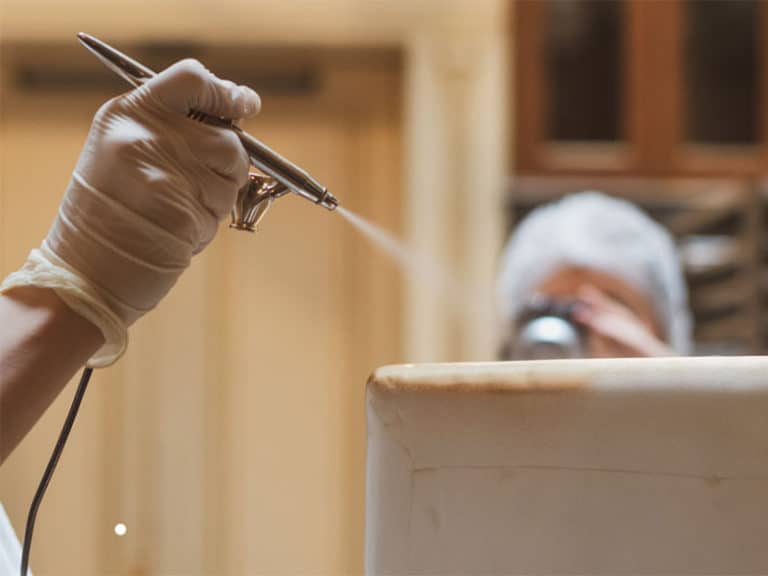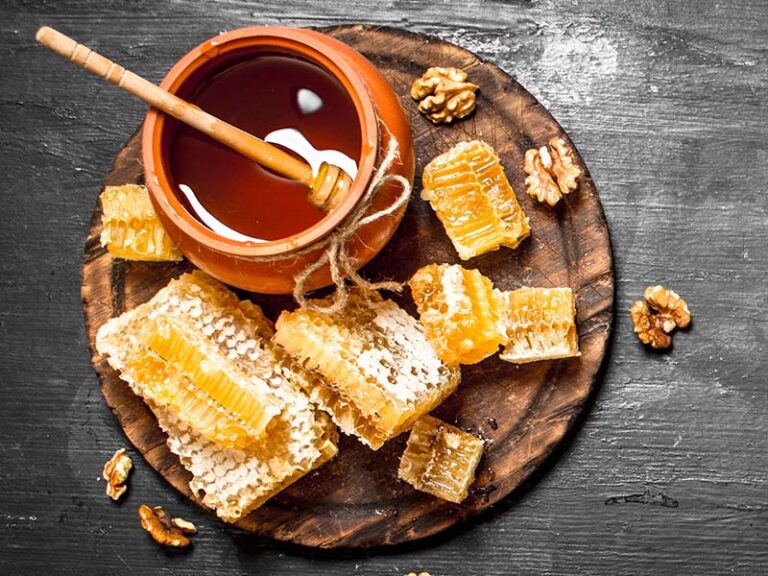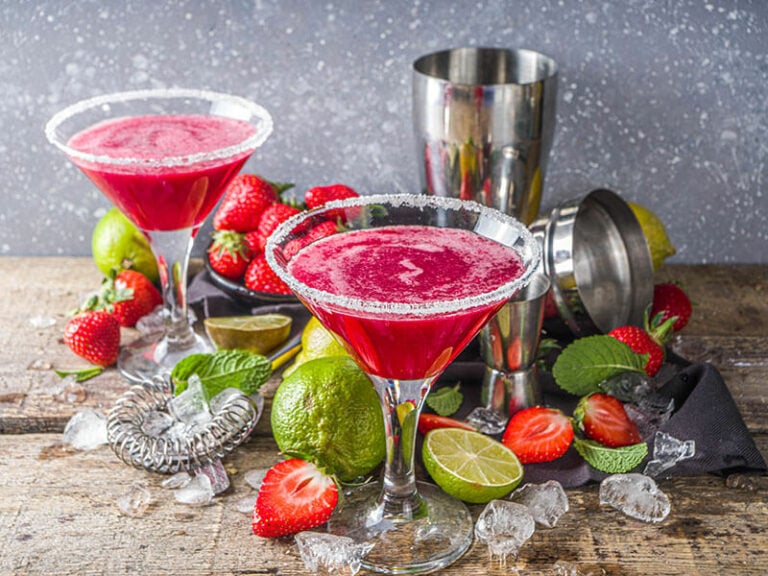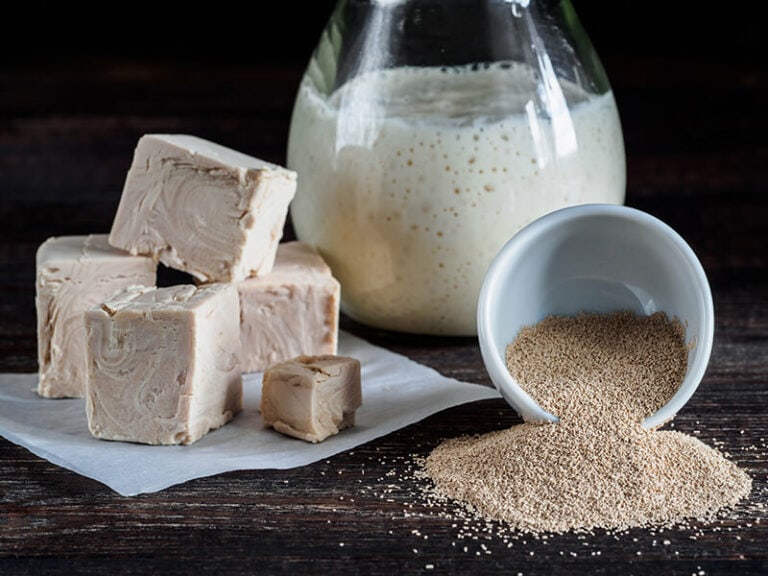You may wonder how frying pans are measured when replacing your old pan with a new one. Knowing the size of frying pans is essential because it can determine your culinary success. Otherwise, you risk ruining your dishes and wasting money on useless tools.
Whatever your purpose, knowing to measure a frying pan can be helpful in many ways. Therefore, you should read this article to explore some tips and tricks for frying pan measurement!
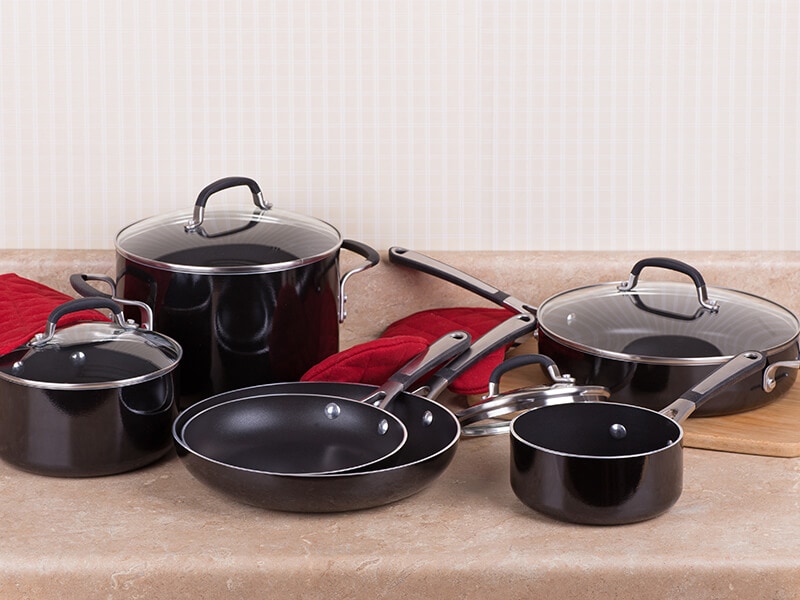
A Frying Pan – Essential Item In Your Kitchen
A frying pan is essential in most kitchens since it is helpful for many cooking styles, such as frying or searing. Usually, the pan is made from metal with a flat base, flared sides, and a long handle. However, it is shallow compared to a pot and has no lid.
There are various types of frying pans. You can find this in a round, oval, or rectangle shape that usually has 8 to 12 inches in diameter. Frying pans can be made from highly thermally conductive materials like cast iron, carbon steel, or copper (1).
Nowadays, you can also find many pans with a nonstick coating, which helps minimize food stickiness and, thus, promotes easier cleanup later. Due to its decent thickness, you can use a frying pan for cooking food at moderate to high temperatures.
Frying pans, however, are often mistaken for their close cousin – sauté pans. Sometimes, you can use sauté pans for frying, though they are designed explicitly for low-heat cooking, notably sauteing.
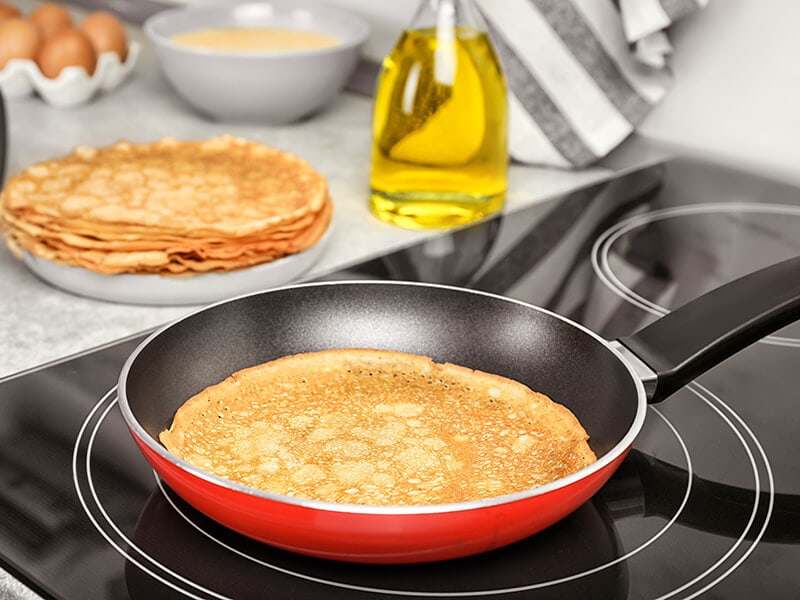
Why Do You Need Measure Frying Pans?
Although manufacturers usually mention the sizes of their frying pans, there is still a chance you can’t find this information in the description. Therefore, knowing how to measure your frying pans can benefit you when buying your new cookware or afterward.
Perfect Pan – Perfect Dish
If you can control the size of your cooking tools, you can increase your chance of winning the cooking game.
A small-medium pan, for example, is appropriate if you are cooking for a small family. However, If there is a larger group, you should use a larger pan to accommodate more food.
As a result, knowing how to measure pans can help you to choose the suitable one for your cooking purposes.
Sometimes, choosing the right size means that you don’t have to overcrowd the pan with your food. Overcrowding can cause the food to steam, and you’ll end up with an inferior texture and flavor.
Besides, figuring out the pan’s size is crucial for cooking since a pan can sometimes be too small or too big for your oven. Therefore, measuring the pan will help you determine the right size of the pan that will fit into the oven.
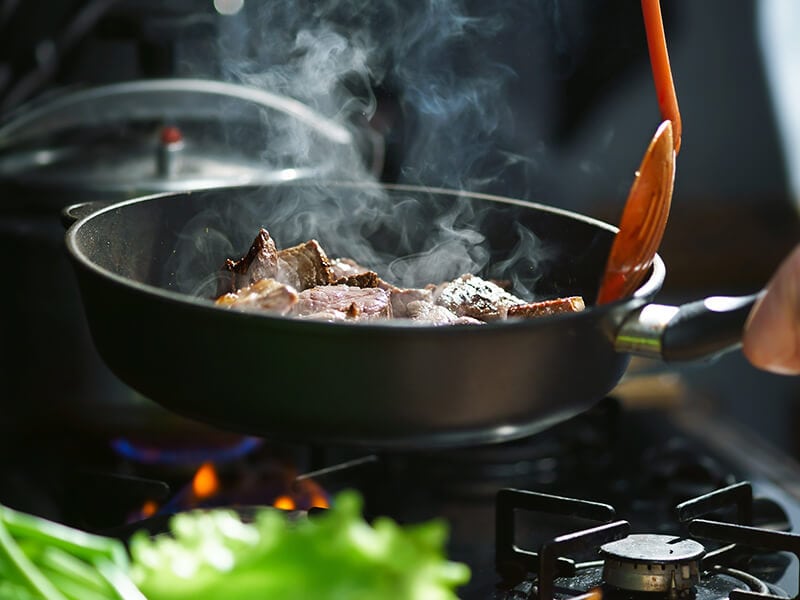
Replacing Your Old, Favorite Pan
You always have favorite cooking tools, but sometimes you need to replace them as they are broken or too old to be used. In this case, you may want to find a similar replacement.
In terms of quality, you can easily find a pan similar to the old one. However, you may be duped by the size if you just look and estimate. To avoid selecting the incorrect size for the new pan, you must first know the dimensions of the old pan.
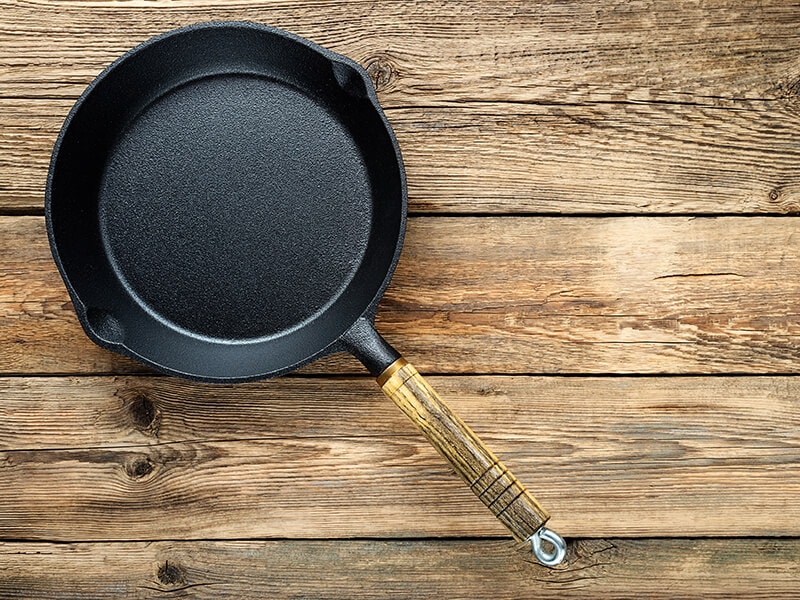
Easier Storage
Let’s imagine how your small kitchen cabinet would be with a too-big pan. I’m sure you will feel annoyed by this pan since you can’t find a suitable place to store it. Knowing the pans’ size can help you pick the suitable one to avoid overcrowding your cabinet and kitchen.
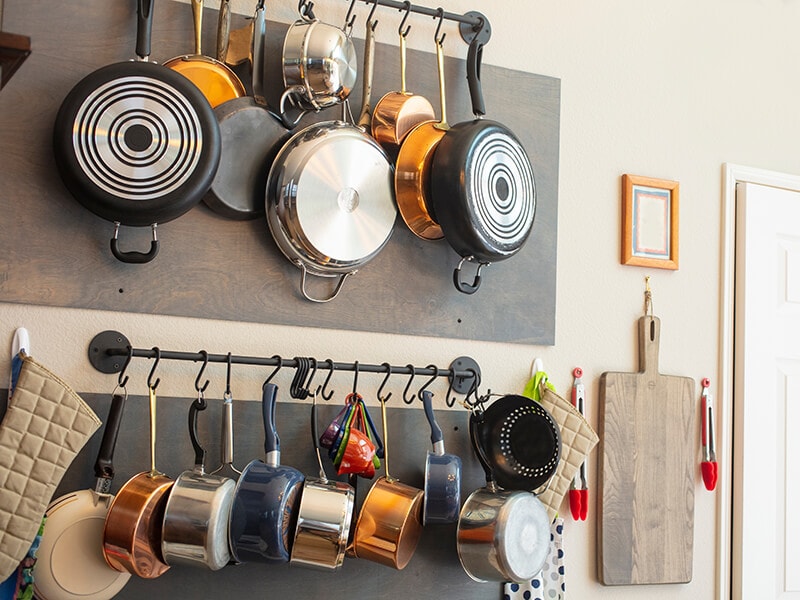
Important Measurements Of A Frying Pan
Some people may think measuring a pan is unnecessary since there are not significantly different sizes. However, if you want to find a pan with an accurate size, here are some points you must consider when measuring a frying pan.
Common Sizes
Today, there are many sizes of frying pans on the market. Therefore, you can look at these standard sizes to make measuring work easier. Usually, the most popular pan sizes are 8, 10, and 12 inches.
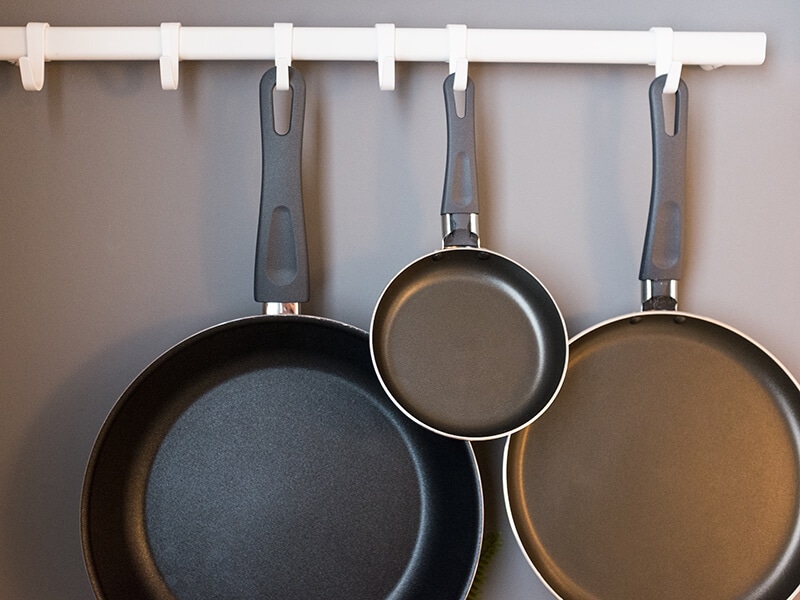
Shapes
Besides the typical round shape, frying pans can also come in square and oval shapes. So, you need to know these most common shapes to determine the cookware’s capacity.
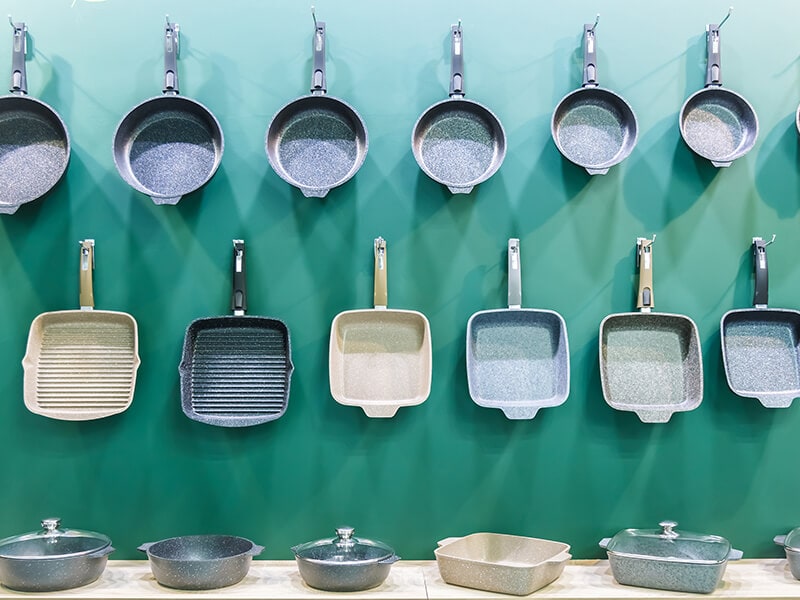
Upper Inner Diameter
The upper inner diameter is an important indicator when evaluating a frying pan or any cooking tool that looks like a pot.
Upper size refers to the width of the pan’s opening, while the inner diameter refers to the diameter of the pan’s interior, excluding the edge. Sometimes, the pan’s edge could be very thick, so you should exclude it when measuring the actual capacity of the pan.
Base Diameter
The base diameter of a pan is the size of its contact surface. In detail, this is the internal diameter of the flat bottom surface minus the start of the curved pan wall.
How To Measure A Frying Pan?
First, you should place your pan on a flat surface. Then you can easily measure a frying pan with a ruler or a measuring tape. However, the measurements can change depending on the shape of the pan. So, check out how to measure three standard frying pans below!
Round-Shaped Frying Pans
Measuring round-shape frying pans is straightforward. You can measure the pan’s upper inner diameter by stretching the measuring tape from the edge to the edge, passing the center of the circle mouth. However, you should avoid the outer ends for an accurate result.
If your pan has a size of 10 inches, its inner diameter from one inside rim to another is 10 inches. You can know the overall diameter of the pan by adding 1 to 2 inches to the specified size, depending on the pan’s thickness.
The base diameter of round-shape frying pans doesn’t have a fixed number since different brands can have different sizes. Usually, the base diameter is smaller than the top diameter. This indicator can be found by measuring the cooking surface, excluding the pan wall’ curve.
Measuring round-shaped frying pans is always that easy.
Square-Shaped Frying Pans
Like the round-shaped frying pan, you can measure the square-shaped pan with a similar method. However, for the square pan, you must measure 2 points.
To know the size of this type of pan, you must locate the two most extended parts of the center to form a cross. After that, you can multiply these two measurements to get the actual size. For example, if the longest part is 8 inches, your pan is 8 x 8 inches in size.
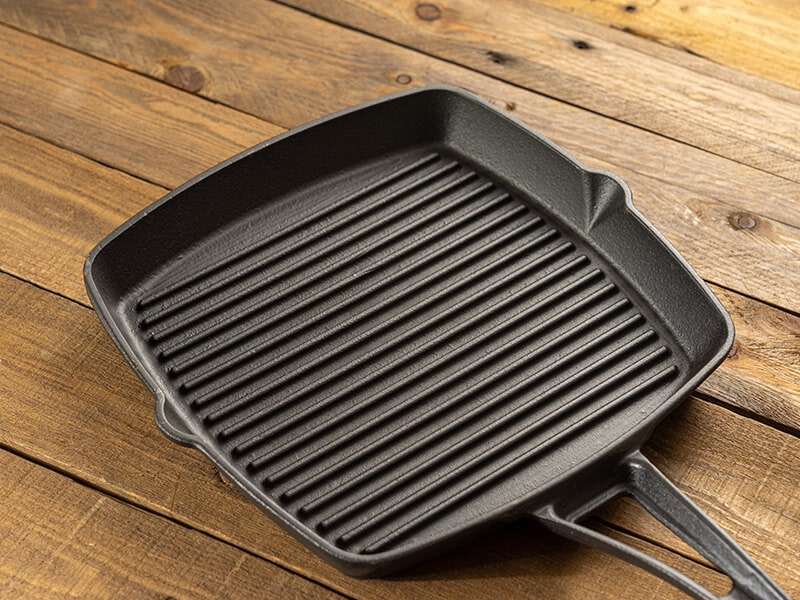
Oval-Shaped Frying Pans
Measuring the oval-shaped pan can be more tricky than the other two since it is challenging to locate the widest part. Similar to the squared pans, you must measure the two points: the widest part and the shorter side.
If your result shows that the longer part is 15 inches and the shorter side is 10 inches, indicating the oval-shaped frying pan’s measurement is 15 x 10 inches.
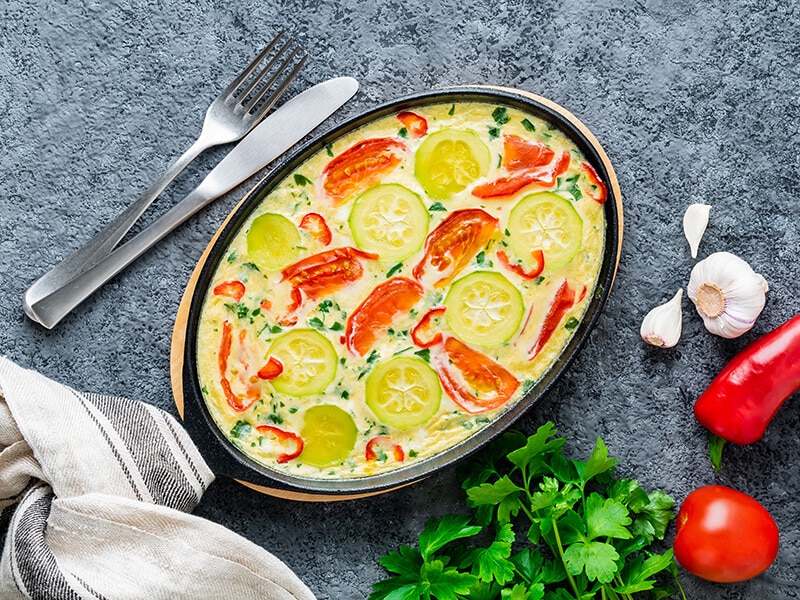
Measuring The Height And Capacity Of Frying Pans
Besides the standard measuring method for the diameter, there are two other indicators you may want to know when measuring frying pans.
Height
Measuring the height of frying pans is simple. The simplest way is to measure from the top of the pan’s mouth down to the base, where the curve walls start. In addition, you don’t need to consider the handles if you just want to know how deep your pan is.
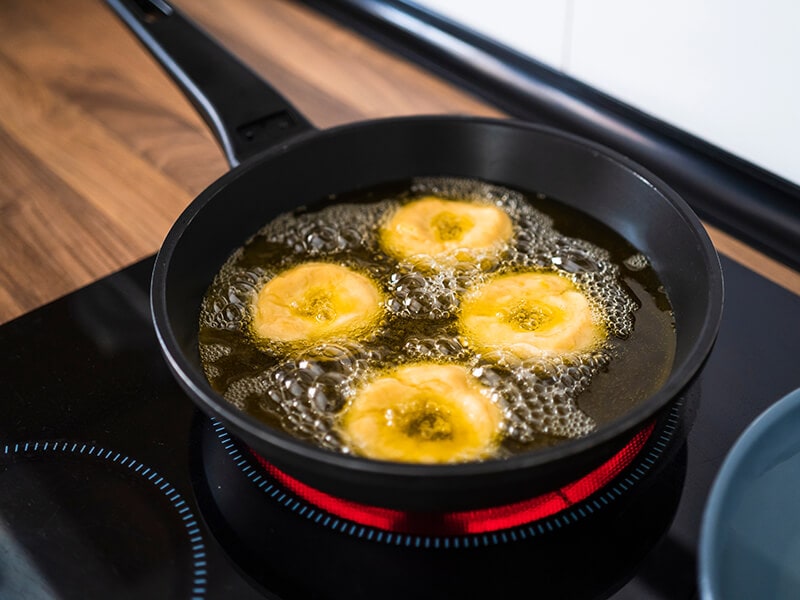
Capacity
With all the above indicators, you can easily calculate the capacity of your pan with simple formulas depending on your pan’s shape. For example, to find the volume of a round pan, you can get the radius squared x height x 3.14.
However, math is sometimes complicated. To avoid knotty calculations, you can fill your pan with water, then tip the water into a measuring cup to know the capacity of your pan.
Frying Pan Sizes And Benefits
The right pan size can help you cook food properly. You may need a large pan for cooking fried rice, but you can use a smaller pan for smaller food portions, such as fish dishes. Since the pan size varies, let’s learn about typical sizes and their intended purposes.
8-Inch Frying Pans
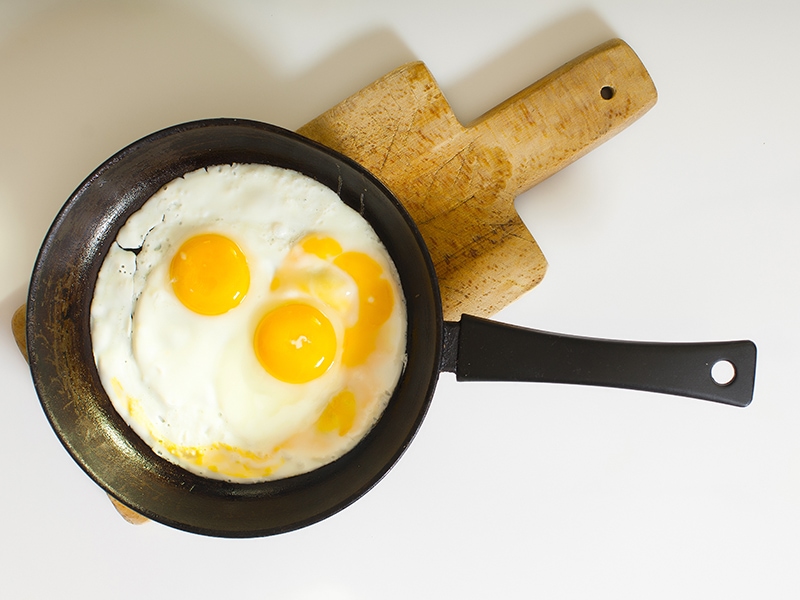
The 8-inch frying pan is small, allowing you to cook food faster. Since the sides of the pan are closer to each other than the large one, the pan reaches a high temperature quicker to cook the food.
However, you can only cook a little food of this size. Usually, 8-inch frying pans allow you to fry 1-3 eggs, 3-5 slices of bacon, chicken breast, and some sauteed vegetables. You can especially make fluffy omelets with this pan.
This pan has a diameter of 8.5 inches, with 5 inches for the cooking surface. It is relatively light, with a weight of 1.75 pounds. In short, this pan is suitable for quick and simple cooking.
10-Inch Frying Pans
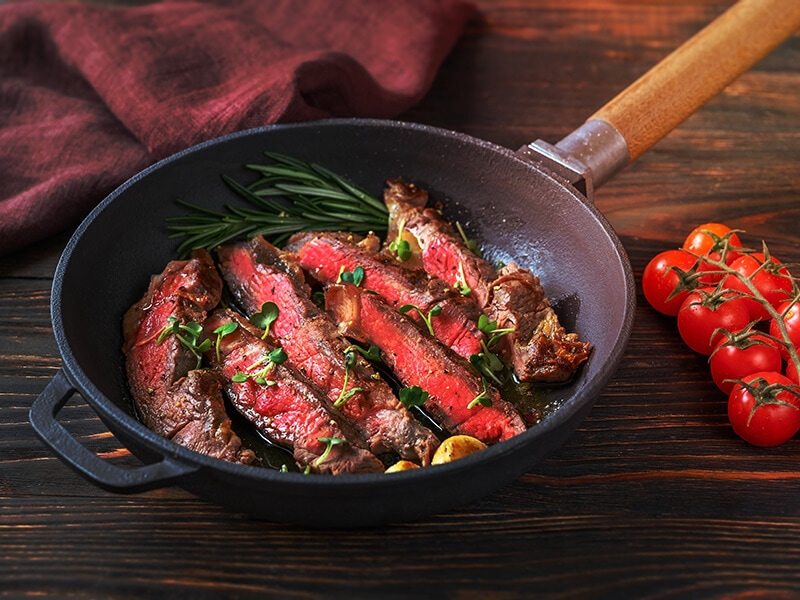
10-inch frying pans are slightly bigger. Therefore, you can cook more food with this pan without “overcrowding” it. However, when using the 10-inch version, you need to heat the pan for longer.
Usually, with this size, you can fry 5 eggs, two chicken breasts, or reheat leftovers. Besides, you can also sauté large amounts of vegetables and other dishes.
The regular measurements of a 10-inch frying pan are 10.5 inches in diameter, 7.5 inches for the cooking surface, and a weight of 2.25 pounds.
12-Inch Frying Pans
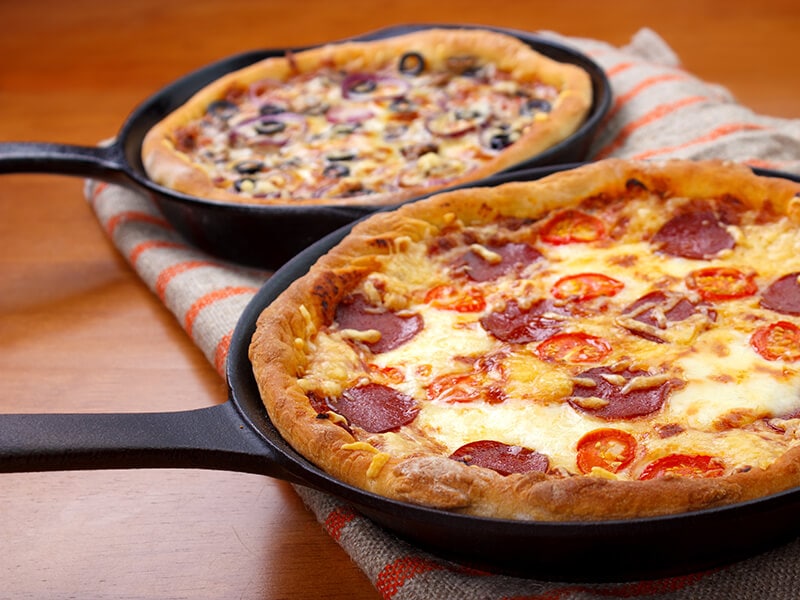
12-inch frying pans are relatively big pans where you can put a large amount of food. You can make a large batch of fried rice with this pan. It is comfortable to fry 6 eggs or 3 chicken breasts simultaneously. You can also make a pizza pan with this 12-inch pan.
The measurements of a 12-inch pan are 12.5 inches in diameter, 9.5 inches for the cooking surface, and a weight of 3 pounds.
Do you know how to make pizza in a frying pan? Let’s discover the answer now.
Which Frying Pan Material Should I Choose?
In addition to the variety of sizes, today’s pans are made from many different materials that can meet all your cooking purposes. In this section, let’s learn about the pros and cons of each material type.
Nonstick Frying Pans
A nonstick frying pan is a pan coated with polytetrafluoroethylene (more commonly referred to as PTFE or Teflon) for a nonstick surface (2). This pan is best for delicate foods like fish, eggs, or crepes.
Besides, it is healthier when using this pan since you don’t need much oil for cooking. However, protecting this pan is tricky since you should wash it by hand. In addition, avoid using any metal utensils with them to prevent the coating from flaking.
Carbon Steel Pans
Carbon steel is another popular material for frying pans. This material is durable and can heat up quickly. However, it is easy to lose heat. I can’t say this feature is bad or good. Depending on your cooking purpose, you can consider this material.
In addition, using this carbon steel pan requires you to season it regularly. If you do the seasoning properly, the pan will have a nonstick layer that can go well for cooking any meat or fish.
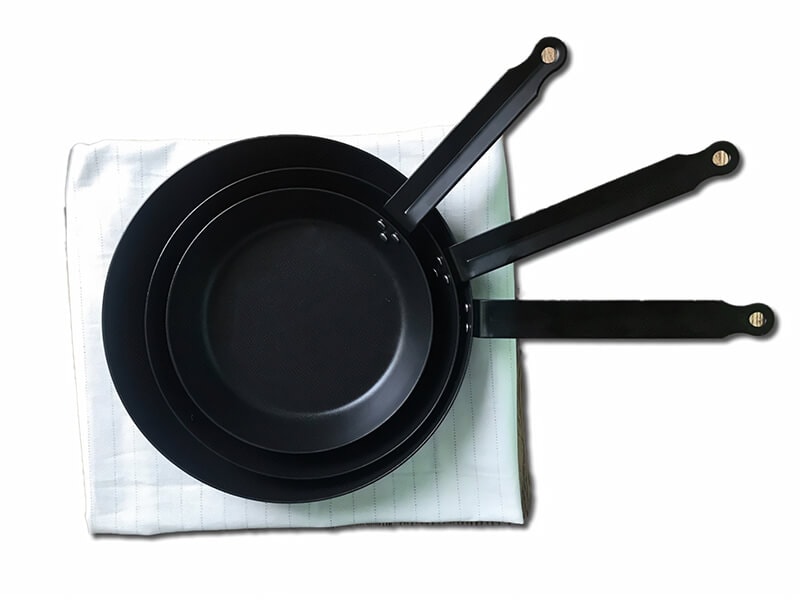
Stainless Steel Pans
Although stainless steel isn’t known for heat conduction, manufacturers usually combine it with other metals, like aluminum or copper, to create the best frying pan. The stainless steel pans are loved since they are lighter than cast iron and can be used with any oven.
However, when using this pan, you need to add an extra oil layer because the food tends to stick to the cooking surface.
Besides, maintaining this pan is quite complicated. For example, you must avoid using scrubbers or harsh detergents when cleaning the pans. You shouldn’t scrub vigorously to avoid scratching the pan.
If you love to cook with a stainless steel pan, you must learn to maintain it.
Cast Iron Pans
Cast iron can be the most popular material in many kitchens. The pan made from cast iron is excellent for heat conducting and distributing. This pan can suit many dishes. However, you must season the pan regularly to maximize its lifespan.
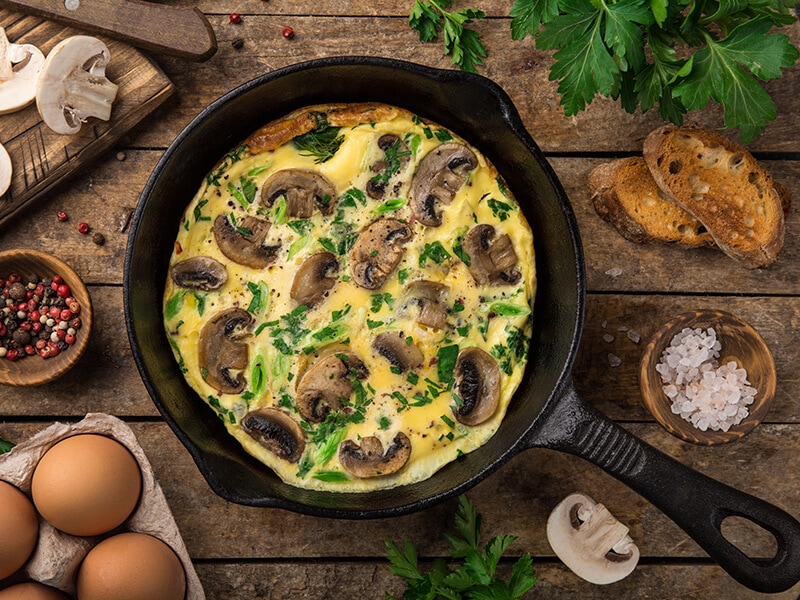
FAQs
It is almost the end of the article, and you may hold all the useful tricks for measuring a frying pan at your fingertips. If you want to learn more, this section will answer the most frequently asked questions that you might have in mind.
Measuring Frying Pan: The Secret Behind A Culinary Success
Measuring a frying pan is easier than you think since you can measure with a ruler or a measuring tape at home. From now on, whenever you need to make sure about the pan size, let’s try the method from this article.
Your friend and family will be grateful if they can learn this useful information. Therefore, please share this article with them. And if you have other tricks for measuring a frying pan, you can share them with the other readers in the comment section.
References
- Frying pan (2022) Wikipedia. Wikimedia Foundation
- M;, S.M.I. PTFE-coated nonstick cookware and toxicity concerns: A perspective, Environmental science and pollution research international. U.S. National Library of Medicine.

